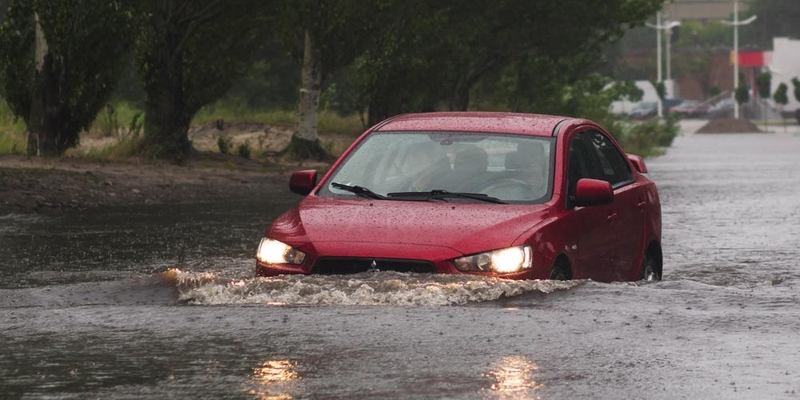
If you are not redirected within 30 seconds, please click here to continue.
Samedi: 10h – 16h HAE

If you are not redirected within 30 seconds, please click here to continue.
If you are not redirected within 30 seconds, please click here to continue.
Driving Your Car in Bad Weather: How to Avoid an Accident

Table of Contents
- Driving too fast or carelessly in poor weather can lead to a collision, which is why paying attention to road conditions and taking it slow behind the wheel when Mother Nature rages is the best way to protect yourself and avoid an accident.
- Cars and their passengers are more vulnerable when it’s raining. The water mixes with oil on the roads and highways and can make them slick and slippery.
- Regardless of the time of year, obeying the rules of the road, driving the speed limit, and avoiding being a distracted driver is essential for the safe operation of a vehicle
Driving in bad weather is stressful at any time of year, and it potentially increases your chances of getting into an accident.
Most often, car accidents in poor weather are due to drivers’ failures to slow down in wet, icy, or snowy conditions. Vehicle technology has evolved over the years to make cars safer to operate in inclement weather, but you still have a responsibility to drive safely when the weather turns nasty.
At any time of the year, the weather can unpredictably make driving a hazardous affair. Driving too fast or carelessly in poor weather can lead to a collision, which is why paying attention to road conditions, and taking it slow behind the wheel when Mother Nature rages is the best way to protect yourself, avoid an accident, and steer clear of the impact a collision can have on your car insurance premium.
Here are some of the most common bad-weather scenarios that affect Canadian motorists:
Thunderstorms
Drivers must worry about more than the thunder and lightning when driving in thunderstorms. In some parts of the country, severe thunderstorms precede tornados. It is critical to know what to expect when driving in thunderstorms, so tune the car radio to a weather station that will give the appropriate warning of any impending tornado activity.
Also, follow the rules of driving in the rain, even if the thunderstorm is dry. Turn on the car’s low-beam headlights, slow down, and allow for extra braking distance should the cars ahead need to stop suddenly. If the thunderstorm becomes unruly, find a safe place to pull over away from trees, electrical poles, or any other potential falling hazard, turn off the car, and wait it out.
Tornados
The best approach for driving in a tornado is not to do so. Driving during the threat of wind tunnels is a no-win situation. Even if drivers are already out on the road and the weather shifts to a tornado threat suddenly, drivers need to stop operating their vehicles. Tornados are highly unpredictable and can shift quickly and without warning; attempting to race away from or out-manoeuvre a tornado is too dangerous to chance. Pulling over and staying in the car is also dangerous, as tornados can pick up and toss a vehicle kilometres away. Instead of attempting to drive away from a tornado, immediately seek shelter and take cover until it passes.
Fog
Horror movies have made fog scary enough without having to drive in it. Keep in mind when driving in fog, high-beam headlights make visibility worse, so always drive through fog with low beams. Drivers should also crack their window a little so they hear the traffic better – fog suppresses sound. Reduce your speed when driving in fog and keep plenty of distance between your vehicle and others in front of you. Use the road’s dividing lines as a guide to ensure the car stays in the lane and never attempt to change lanes in foggy weather. It’s best to stay put and keep moving forward, slowly and cautiously.
Hurricanes
Rule No. 1: don’t attempt to drive during a hurricane. However, in many cases, drivers might be trying to get out-of-town before the storm strikes and do not make it.
When driving in a hurricane, it is critical to have a plan before the storm ever hits. Prepare an evacuation plan during the hurricane off-season by mapping and driving all available routes from wet to dry land. Keep your automobile stocked with emergency supplies, such as a first-aid kit, non-perishable foods and manual can openers, drinking water, flashlights, a portable radio, batteries, and blankets. Also, always keep the car full of gas and have a fully charged cellphone. Keep the car’s maintenance in check to avoid breakdowns, and when it’s time to hit the road, drive slowly, cautiously, and avoid all potentially flooded areas.
Blizzards
Winter driving is another matter altogether. Safely driving through a blizzard means being prepared beforehand. Keep your car in tip-top shape during winter months and pay special attention to the condition of the tires and windshield wiper blades – and have winter tires installed. Most insurers will give you a discount if you drive with winter tires during the colder months.
Always keep extra antifreeze in the car, as well as other necessities such as blankets. Let somebody know the route you’re taking and approximately how long it should take to arrive at your destination. That will help authorities if they must look for drivers who got lost in the blizzard’s low-to-zero visibility. Drive slow and keep a wary eye on all the vehicle’s gauges to make sure the car is operating properly through these dangerous conditions. Drivers who get stuck in the blizzard should make sure the exhaust pipe is clear of snow and debris to avoid carbon monoxide poisoning.
Rain
Cars and their passengers are more vulnerable when it’s raining. The water mixes with oil on the roads and highways and can make them slick and slippery. As with other types of inclement weather, slow down when driving in rainy weather.
Driving in rainy weather requires a little patience and a lot of common sense. Drive cautiously, turn on the headlights, don’t follow other vehicles too closely, and don’t make unnecessary lane changes or turns.
Keeping the car tires on the road helps prevent accidents, and when drivers are driving too fast or make sudden changes in direction, the car tires can separate from the road and cause what is called hydroplaning. Should the car begin to skid or hydroplane while driving in the rain, take your foot off the gas and carefully try and turn the car to right the vehicle. Do not brake if the car has traditional brakes; gently brake if the car has an anti-lock braking system.
Always keep the car’s maintenance up to date and the tires properly inflated to help avoid breakdowns and accidents in the rain.
Floods
The dangers of flash floods can turn a car into an unwilling boat. Use all precautions when driving in rainy weather and avoid continuing down any road that has large pools of water on it. Flooding is deceptive on roadways and can sweep a vehicle away. Do not take for granted that a car will keep everyone safe in a flooding situation. Rather, think as if everyone was on foot and head for higher ground until the flooding subsides. With flooding and any other type of weather hazard, it’s best to stay off the road. Never drive in any inclement weather unless it is necessary.
Don't waste time calling around for auto insurance
Use RATESDOTCA to shop around, and compare multiple quotes at the same time.
Staying safe behind the wheel in bad weather
If you have the unfortunate experience of being involved in a car accident, you may need to file a claim. Regardless of the time of year, obeying the rules of the road, driving the speed limit, and avoiding being a distracted driver is essential for the safe operation of a vehicle.
Moreover, it can’t hurt to take a quick refresher on how to drive at night and in bad weather from the Ontario Ministry of Transportation’s Driver’s Handbook. After all, maintaining a clean driving record with no collisions can help you save money on your car insurance premium.
Get money-saving tips in your inbox.
Stay on top of personal finance tips from our money experts!









